Few thing are more thrilling than bringing home the source of your own lilliputian intimate orchard .
But you might be wonder where incisively in your yard to put your fruit trees for optimal growth . How far apart should you imbed them ?
We link to vendors to help you obtain relevant Cartesian product . If you buy from one of our links , we may earn a mission .

Photo by Laura Ojeda Melchor.
yield tree spacing varies depending on what you ’re farm . In this usher , we ’ll show you how to make up one’s mind the ideal spacing for the most common yield trees at the nursery .
Here ’s everything we ’ll dive into :
What You’ll Learn
Why Does Spacing Matter?
You ’ve probably see paradigm of fruit trees wad together in commercial orchards . Maybe you ’re thinking that you could get aside with something standardized . The more trees the good , correct ?
Not so much . Commercial yield growers meticulously design their orchards for maximum turnout and minimum peril of disease , often witness a balance between the two .
Put simply , the pro typically have all different tools for cultivating aggregated amounts of fruit tree that the average gardener does n’t need .

Backyard gardeners have to focus on ensure there ’s some cubital joint room available between Tree .
The measurements we ’ll talk about in this article take into account the shade cast off by the tree diagram canopy , which affects how much light the neighboring trees and plants receive .
It ’s also helpful to suppose of these numbers as being slimly pliable .

Some trees acquire tall than the top end of their expected mature height range , specially if they ’re grow in ideal condition in a region with a farsighted growing time of year . Others might never mature as tall as you have a bun in the oven them to .
It ’s easier in the long run to plant your fruit trees far aside than you need to , rather than pose them too close together .
The bees and other pollinator will discover their means , as long as tree diagram that necessitate pollenation are within 100 feet of each other .

But if you institute them nigher rather than farther apart , and the orchard end up wait crowd a few long time down the road , unconstipated pruning can help to keep it healthy .
Appropriate spatial arrangement also help to ensure that each fruit tree gets the nutrients it take from the grease . Root systems stretch out out to one and a one-half to three times the stature of a Sir Herbert Beerbohm Tree .
It ’s ok for the ascendant to tangle , but give them at least the mature canopy ’s diam of room to originate can help them to get at the appropriate amounts of victuals and water .

In add-on , appropriate spatial arrangement :
Before we start , it ’s significant to mention that with many types of yield trees , you must institute at least two unlike varieties within the same speciesthat bloom simultaneouslyto promote cross - pollination .
The bloom timing is crucial , hence the spectacular italics : if you grow two different variety of apple but one blooms at the start of the summertime and the other bloom of youth a calendar month later , you wo n’t get yield .

Do your enquiry first to check which varieties you need to plant together , to ensure a sweet harvest of yield .
For best effect , space your Sir Herbert Beerbohm Tree the recommended space apart . mark that when we say to blank space tree 20 foot apart , it mean 20 foot on all sides of the tree . These distances are the lower limit required for optimal pollenation ; you’re able to fan out them far out from each other if you desire , especially if you ’re develop a ego - fruitful tree .
Any nearer and they could become crowded , any farther and pollination may be negatively affect in some pillow slip .

Get out that tapeline measure and let ’s get started !
Fruit Tree Spacing Guidelines
We ’ll include space guidelines for touchstone , semi - dwarf , and nanus varieties when useable . Spacing passport are for respectable growth base on mature size and other factors , including pollenation .
Unless you have lots of blank space in your yard , we advocate planting dwarf and semi - dwarf change , specially if you need to found more than three to five trees . formally , an orchard is any group of five or more yield trees .
Keep in mind that many types of fruit trees are grown by engraft a scion , or the shoot system of a tree kind known for its yield , to a rootstock that helps see tree size , along with cold hardiness and disease resistance .
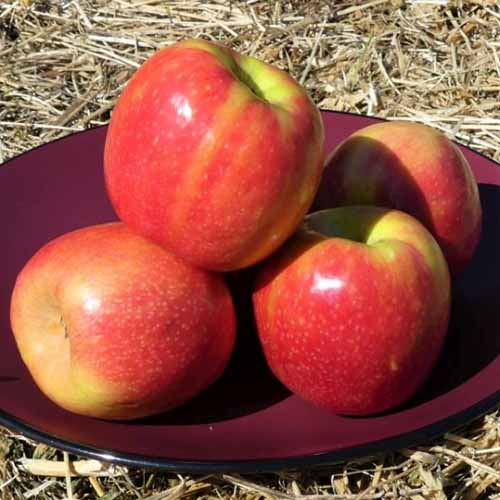
rootstock have … interesting , often unnoticeable names . This is in large part because they are based on nursery test trials , and are not typically available on their own for commercial cut-rate sale .
Take these apple rootstocks , for exemplar . Common dwarf rootstocks include ‘ Bud 9 , ’ ‘ G.935 , ’ and ‘ EMLA 9 . ’ pop semi - dwarf rootstocks are ‘ EMLA 26 , ’ ‘ G.202 , ’ and ‘ EMLA 7 . ’ ‘ Bud 118 ’ and ‘ EMLA 111 ’ are distinctive , received rootstocks .
EMLA varieties are named for selections from the East Malling and Long Ashton enquiry stations in England , while the Budagovsky or Bud series was developed in Russia . G represent the Geneva rootstock series develop at Cornell University .
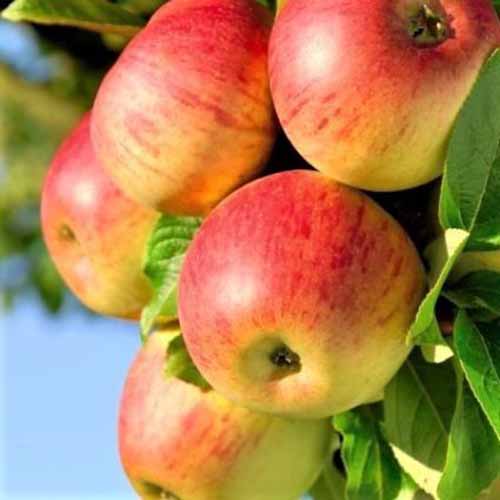
Malus pumila scions are normally grafted onto Malus pumila rootstock , but other specie in the Rosaceae family can often work together . For model , peach scions can be graft onto plum rootstock , and the result yield will be a peach .
Apple
Sing it with me , now : A is for … aMalus domestica ! ( I have too many kid song stuck in my head these days . My apologies ! )
Lest I divagate , mature , full - sizedM. domesticacan mature up to a meridian of 20 to 25 feet with a similar bedcover . And I must say , I ’m quite aroused for my three youngM. domesticaspecimens to get that big !
Plant Malus pumila Sir Herbert Beerbohm Tree 20 to 25 feet asunder from one another . While some cultivars are self - fruitful , most require cross - pollination between two different varieties that blossom at the same prison term .

Make it easy for the bees who aid to give you those delightful , laconic apples and space them no farther than 100 feet apart .
Semi - dwarf trees rise to between 12 and 15 foundation tall and wide , so give them 15 feet of space between each tree diagram .
Dwarf apple treesgenerally grow to between eight and 10 foot improbable with a similar spread . They ’re happy to have about 10 feet separating them from surrounding apples , buildings , and fences .
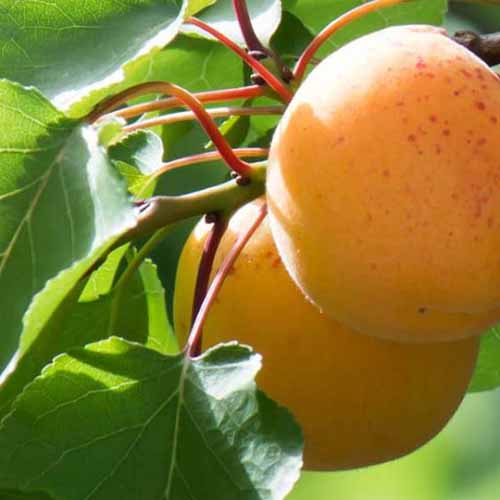
It ’s very well to plant apple and other yield Sir Herbert Beerbohm Tree in the Rosaceae family within 10 feet of structures , because their roots are not invasive .
You may want to reckon how much shade the structure cast , however , as well as how much subtlety the apple will give ring plants .
‘ Pink Lady’is one of my favorite mixture . sourish and sweet with blush - pink and sensationalistic cutis , ‘ Pink Lady ’ salad days in mid - spring and is stout in Zones 6 through 9 .
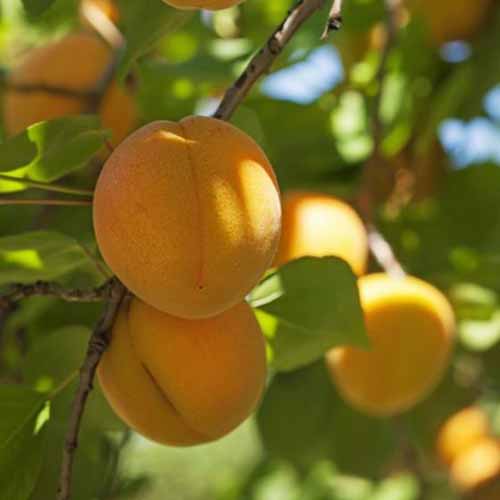
‘ Pink Lady ’
Four- to five - base - tall ‘ Pink Lady ’ trees in three - gallon containers areavailable from Nature Hills Nursery .
Looking for the perfect pollinator for your ‘ Pink Lady?’Plant a ‘ Honeycrisp’nearby .

Hardy in Zones 3 through 8 and flower in mid to late spring , ‘ Honeycrisp ’ is a perfect pairing for your ‘ Pink Lady . ’ You ’ll see that its red and sensationalistic freckled skin and sweet-flavored , spicy crunch are perfectly resistless .
‘ Honeycrisp ’
Grab your four- to five - foot - marvelous ‘ Honeycrisp ’ in a three - gallon containerfrom Nature Hills Nursery .

Learn more about mature apples in our guide .
Apricot
Full - size apricot ( genus Prunus armeniaca ) trees can grow 20 to 25 feet grandiloquent and wide , so it ’s best to give them 20 to 25 foot of space between each industrial plant .
Apricots are self - fruitful , mean you only require one tree diagram so as to get a crop .
hybridization - pollination between two dissimilar cultivars that bloom at the same time can improve yields , however , so why not plant more than one ?
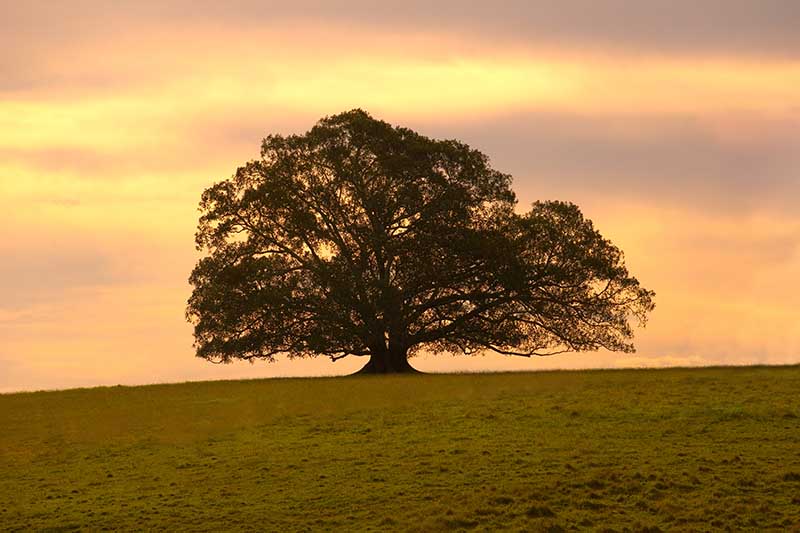
While dwarf apricot mixed bag were n’t available until a few year ago , you may now buy dwarf variety like ‘ Garden Annie , ’ which grow to between eight to 10 ft grandiloquent and wide . Provide eight to 10 foot of space between each plant .
One of my favorite apricot varieties is ‘ Autumn Glo , ’ which blooms in March , has unfaltering , sweet flesh , and does n’t spite easy .
Hardy in zone 7 through 9 , ‘ Autumn Glo ’ peach ripen in August and September , and hold their grain well in Proto-Indo European and other baked goodness .

‘ Autumn Glo ’
Growing just 12 to 15 feet magniloquent and wide , these are the perfect apricots for your fond summertime garden . Three - congius container areavailable from Nature Hills Nursery .
‘ Chinese ’ is an idealistic mate for ‘ Autumn Glo ’ because it also blossom in early spring . recall , you don’tneedto plant two potpourri with similar rosiness time next to each other , but output may better if you do .

‘ Chinese ’
With its redolent , angelical , mild fruits , ‘ Chinese ’ is dauntless in Zones 5 through 9 , and grow 15 to 20 foot improbable and wide . you may rule plantsavailable from Nature Hills Nursery .
Learn more about grow apricot tree diagram here .

And for more suggested varieties , see our roundup of the best cold unfearing yellowish pink to grow .
Avocado
Avocados from the store taste nice , but avocados mighty off the tree are heavenly .
If you desire to rise fat , creamy , nutritious avocado tree ( Persea americana ) , be sure to set aside enough space in your garden . These can grow up to 30 metrical foot marvellous and wide , or even a piddling bit self-aggrandising in idealistic conditions .
Space them 30 feet apart for best results , or corrupt a gnome assortment , which grows just eight to 10 feet tall and wide-cut . Give these about 10 feet of space .

Be aware that avocados have a shallow , vigorous root system that can exterminate nearby plant life and terms construction innovation .
Since you do need two dissimilar cultivar – one “ type A ” and one “ case Bel ” – in parliamentary law to ensure that pollination occurs , you might require to take dwarf potpourri if you have a diminished or medium yard .
Favorite varieties admit ‘ Fuerte , ’ a type B with jolly thin skin and rich flavour ; ‘ Hass , ’ a type A known for its tumid and flavorful fruit ; and ‘ Wurtz ’ ( also known as ‘ niggling Cado , ’ thanks to its dwarf stature ) , the popular miniature avocado tree diagram .

you’re able to find some of thebest cultivar for cooler growing zones in our roundup .
Learn how to grow avocados in our guide .
Fig
There ’s a story from my partner ’s side of the family that I love .
His gravid - grandparents immigrated to the United States from Italy , and when they act they brought a vernacular fig ( Ficus carica ) cut with them and set the settle down cutting in their new home .
My partner ’s granddaddy had to move out of this family eventually and sold it to someone else – but before he leave , he take a cutting from the common fig .

He planted that one in Highland , California , and my partner rise up eating reinvigorated fig from the tree it became .
As figs do , it grew tall – almost 30 feet tall with a similar cattle farm , which is right on target for a fig . But if you ’re lucky , yours will rise so sometime that it ’ll spread up to 50 feet wide .
Fig theme can be sharply incursive , though , so make certain you engraft them at least 50 feet away from any bulwark or construction .

Moreton Bay FIG ( F. macrophylla ) , a non - eatable variety show , can even contact 200 foot in height and width in idealistic condition , so you probably should n’t institute one of those unless you have shipload of infinite !
Some figs are pollinated by modest wasps in the Agaonidae family , though most mutual type develop for feed are self - fruitful and do n’t command a wasp ( or a second tree ) for pollenation .
This is a good affair , since you have to give each received Libyan Islamic Group at least 50 feet of infinite on all sides !

gnome varieties grow from six to 10 feet tall with a spread of just five to eight feet , so it ’s much easy to rise several in the same yard . Space each nanus common fig eight infantry apart .
‘ Brown Turkey ’ is a popular variety that does n’t require wasp pollenation , as is , ’ ‘ Celeste , ’ ‘ Chicago Hardy , ’ which also – as its name advise – grow well in colder area .
Check outour roundup to learn more about fig variety .

Read more about how to grow fig in our usher .
Grapefruit
Do you love outflank cherubic , sourish , bright red grapefruit flesh out from its rind and spooning it into your eagerly awaiting sass ? So do I.
If you last in a warm and cheery sphere , you ’re in circumstances : you may have the chance to grow these fruit in your own backyard .
Grapefruits ( Citrus×paradisi ) are ego - fruitful citrus trees that produce 15 to 30 feet tall and wide , depending on the assortment .

Give these 15 to 30 ft of blank space between each , and the same amount of space away from buildings . Semi - dwarf cultivars grow eight to 12 feet tall and wide , so give them 12 invertebrate foot of blank space on all sides .
Want to turn a little Sir Herbert Beerbohm Tree that bring forth fruit with yellow rind and sweet-smelling - tangy red flesh ?
pick out ‘ Rio Red , ’ which is hardy in Zones 9 and 10 in the ground , or in Zones 4 through 10 whengrown in a container that gets moved indoorsduring the winter .

‘ Rio Red ’
you may find a four - by - four - by - nine - inch container with a one- to two - foot plantavailable from Nature Hills Nursery .
get wind more in our guide to growing gnome citrous fruit .
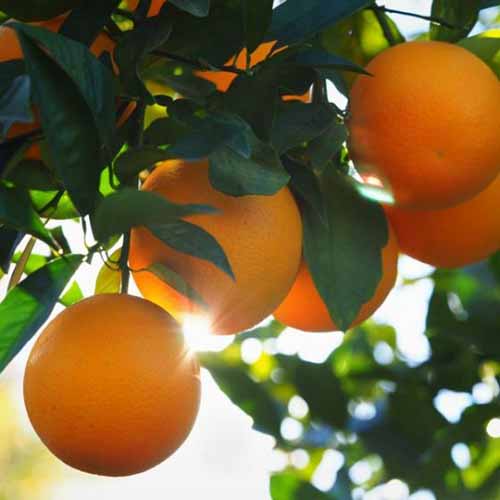
Guava
I ’m Cuban , and if there ’s a yield tree diagram that shout “ Cuba , ” it ’s the Psidium littorale ( Psidium guajava ) .
I grew up get boxwood of goody in the ring armour from my Cuban grandparent , and there was always pasta de guayaba ( Psidium littorale paste ) in there .
I loved cutting a slice of the paste , adding a piece of music of cream Malva sylvestris , and sandwich it between two crackers .

I ’m not the only one , either – this is a pop goody in many Romance American res publica !
If you ’re lucky enough to populate in a grow zone that digest guavas , reserve a good turn of blank in your yard .
This tropical plant can originate 15 to 25 feet magniloquent and broad . Give each one at least 25 foundation of outer space on every side .
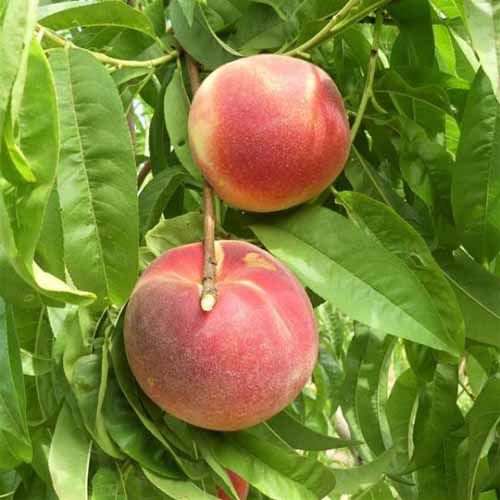
Dwarf kind are extra short , though , so feel free to constitute more than one . Dwarf guava bush get to just four to six feet marvelous and wide-cut , meaning you only need to administer six feet of space between each guava .
Some guavas are self - fruitful , but it ’s good to plant two unlike cultivars for a ripe - sized harvest .
Popular cultivars include ‘ Crystal , ’ an extra - sweet and mostly seedless cultivar , and ‘ Patillo , ’ a sort with sweet , shiny pink flesh .

Lemon
Back when I lived in southern California , one of my favorite things about the star sign I rent was the older lemon tree growing in the backyard .
Whenever I had a hankering for lemon BAR , I ’d climb up into the branches and pick a few advanced yield .
I ’ve never had near lemon bars – not before I lived at that house , and not since I moved away .

Lemons ( Citrusxlimon ) grow 10 to 25 substructure marvellous and 15 to 20 feet blanket , so give them at least 20 feet of quad in the garden .
These ego - fruitful citrus trees do n’t require a nearby Citrus limon to produce fruit . Mine happily produced more yield than I could habituate , and it was the only lemon around .
Although , I did have a monolithic grapefruit tree diagram growing on the other side of the garage . I sleep together , I get laid , I ’m just bragging now . It was a pretty dreamy frame-up !

If you ’d rather plant a small citrus fruit , dwarf lemons grow eight to 10 feet marvelous and broad , so you may fit more of them in a smaller yard or garden . Allocate 10 feet of space between each tree .
But , I will say , there is nothing quite like climbing into your very own , standard - sized lemon and plucking bright fruits off the branch .
‘ Eureka , ’ which bears a invigorated , powerful lemon flavor and few seed , and ‘ Meyer , ’ a small , slight - skinned , extra - sweet lemon that makes dreamy lemon yellow bars , are two popular varieties to grow at house .

Lime
Is there anything tastier than homemade key calcined lime pie made from limes you grew in your thousand ? Perhaps not . If you desire to add to your little citrus fruit grove with a lime tree diagram , here ’s what you want to bonk about spacing .
Limes ( Citrusxaurantifolia ) grow 15 to 20 feet high with a bed covering of 15 infantry , so give your plant 15 metrical foot of place between it and another tree diagram . Like most citrus trees , limes are self - fruitful .
gnome limes grow six to 10 feet improbable and about six or seven feet wide . Give each one at least seven groundwork of space to grow and unfold .

Short on space ? cardinal limes are popular in both their dwarf and standard sizes .
Dwarf Key Lime Tree
This nanus fundamental lime tree from Gurney’s , available at the Home Depot , comes in a four - in pot , is hardy in Zones 9 and 10 , and is idealistic for modest grow space .

Loquat
Do you adore the sweet , sourish relish of loquat ?
If you dream of growing your own , you ’ll want to ready aside a distance that allows for 25 feet of raise room , as the Japanese medlar ( Eriobotrya japonica ) develop 15 to 30 feet marvelous and 15 to 25 feet wide .
gnome loquats can grow anywhere between six and 15 feet magniloquent and broad , bet on the variety . Give each tree diagram at least 10 to 15 foot to ride out on the good side .
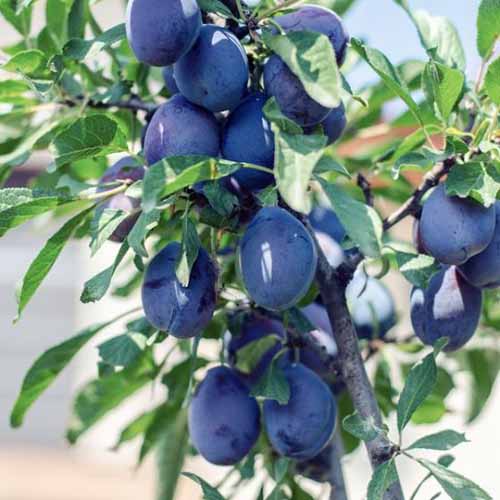
While most cultivars are self - fertile , cross - pollination with other change that flower at the same time can increase yield . ‘ Tanaka ’ and ‘ Advance ’ are two varieties that bloom together and aid each other bear scores of fruit .
Take a rich dive into thecare of these pleasant-tasting fruit by reading our guide to develop loquats .
Mango
The mighty mango ( Mangifera indica ) can grow over 100 foot marvellous and 50 feet broad , but boy , is the large , orange yield tasty .
If you ’re golden enough to experience on an enormous attribute , you could plant a standard mango in your yard and land all your friends over to see it .
Just ensure you plant it at least 50 feet away from , well , everything . The roots go late and can mess with build foundation if they ’re planted too close to homes and other structures .
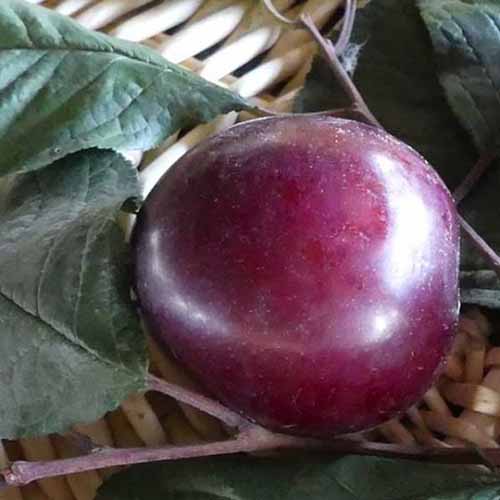
Mangoes are ego - fruitful , so you wo n’t want to plant two of the whoppers in parliamentary procedure to get fruit .
If you live in a small space , do n’t fray ! Dwarf mangoes grow just 10 to 20 feet tall and wide , depending on the cultivar , meaningalmostanyone can give Mangifera indica - produce a try .
While they ’re only suited to outdoor growing in Zones 9 through 11 , they can be grown in containers indoors in Zones 4 through 8 if you have the blank space . Give each dwarf mango 10 to 20 feet of space on all sides .

The ‘ Carabao ’ mango is renowned worldwide for its fragrance . ‘ Honey Kiss ’ is a compact , container - friendly cultivar that you may mature indoors all yr long .
Nectarine
Ah , nectarines . Do you like to relish them when they ’re crunchy or piano ? I ’m a diehard fan of crunchy nectarine tree myself , and no one can make me deplete one that ’s too ripe .
Regardless of which way you adore eating these delicious Lucy Stone fruits ( genus Prunus persicavar.nucipersica ) , develop them in your own thou lets you decide whether to pick them early on , or let them extend to mature on the offset or your counter until they ’re diffuse and juicy .
Standard nectarines acquire 18 to 25 feet marvellous and spacious , so give each one 25 feet of space on all sides .

Semi - dwarf nectarines grow 12 to 18 feet magniloquent and involve 18 feet of space on all sides , and dwarf varieties grow five to eight feet tall . Give the lowly nectarine eight feet of place .
With its sweet white physique and spectacular flavor , ‘ Arctic Glo ’ is a democratic Prunus persica nectarina to acquire at home . ‘ summertime Grand ’ produces large yellow fruits that are also have sex for their sweet flavor .
Orange
If you ’ve ever driven past an orange grove , you know that orangeness ( Citrusxsinensis ) can arise quite improbable . The mature height of an orange is 20 to 30 feet , with a spreading of 20 feet .
Give orange at least 20 foot of space in the garden . Like lemons , they are ego - fruitful , so you only need to embed one .
Or , plant an orange tree and a lemon next to each other and enjoy homegrown lemon saloon for dessertandfresh orange juice for breakfast .

Compact or dwarf variety show grow eight to 10 metrical foot grandiloquent with a bedspread of just three to five foot , so space them at least five feet apart for best solution .
test growing ‘ Navel , ’ ‘ line of descent Orange , ’ or – my favorite – fragrant - flowered , juicy , largely seedless ‘ Valencia ’ oranges .
‘ Valencia ’

you’re able to incur a three - gallon container with a live works that ’ll maturate eight to 10 invertebrate foot marvelous and widefrom Nature Hills Nursery .
‘ Valencia ’ is dauntless in Zones 9 and 10 if you acquire it in the ground , or Zones 6 through 10 if you opt to institute it in a container and move it indoors during the winter .
Peach
fresh , tart lulu ( Prunus persica ) are usually self - fruitful , so you likely only need to establish one in Holy Order to get yield .
But if you limit yourself to just one tree , you may only get a small crop of peaches . Why not engraft more ? pluck up two trees of different miscellany that bloom at the same clock time and you ’ll glean a liberal bounty of peaches .
Full - sized peach Tree grow up to 20 feet tall and blanket , so you ’ll need to plant them 20 foot apart . Dwarf beauty grow eight to 10 feet marvellous with a spreadhead of 10 metrical unit , so apportion 10 feet of space between each tree .

Three of my favorites are ‘ Babcock , ’ ‘ Hale Haven , ’ and ‘ hark . ’
‘ Babcock ’ has firm , livid flesh arrant for canning , is hardy in Zones 6 through 10 , and grows 12 to 15 feet tall and wide .
‘ Babcock ’

find oneself a three - gal container with a four- to five - foot treefrom Nature Hills Nursery .
‘ Hale Haven ’ is a juicy icteric peach that shine in pies . Is hardy in Zones 5 through 8 , and grows 12 to 15 metrical foot magniloquent and wide .
‘ Hale Haven ’

Grab your three - gallon containerfrom Nature Hills Nursery .
‘ Harken ’ is that classic , fuzzy , piano peach that will make juice dribble delightfully down your Kuki-Chin .
‘ Harken ’

Hardy in zone 5 through 9 , ‘ Harken ’ grows 15 to 25 foot grandiloquent and encompassing , and is available in a three - Imperial gallon containerfrom Nature Hills Nursery .
Find outeverything you need to jazz about growing sweetheart in our pathfinder .
Pear
Like apple , Asian and European pears typically need cross - pollination between salmagundi that blossom at the same time .
But pears ( Pyrusspp . ) do n’t grow as magniloquent as apples . A mature , full - size Pyrus communis will reach up to 20 ft high-pitched and wide .
Space your pear tree 20 ft apart . For semi - dwarf varieties , which can grow up to 12 to 15 feet marvellous and 10 animal foot wide , provide 12 feet of quad between each tree diagram .
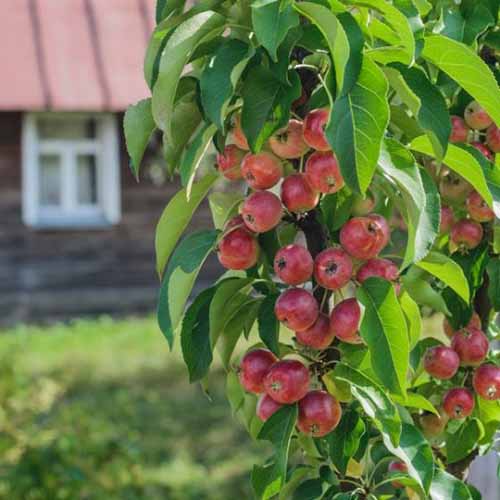
Dwarf motley spring up eight to 10 feet grandiloquent and spread just seven or eight feet , so they need eight feet of space between each .
My favourite pear cultivars include ‘ Anjou , ’ a lightly odoriferous , house - flesh cultivar , and ‘ Bartlett , ’ a super - honeyed , soft cultivar that cross - pollinates with ‘ Anjou . ’
In ourguide to growing pear , you ’ll learn all the ins and out of care .
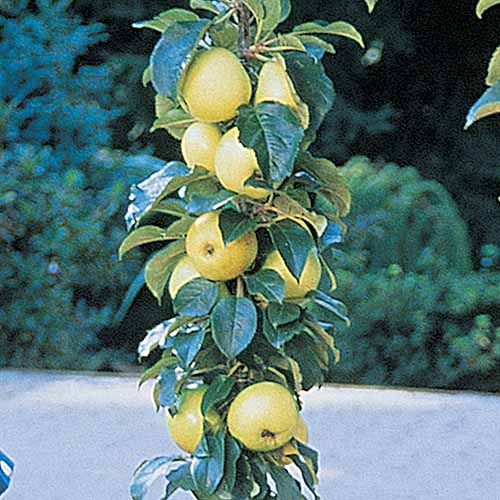
Persimmon
If you want to grow persimmons ( Diospyrosspp . ) , salve a space that ’s 25 base diam where you desire your tree to turn , because these beauties develop 20 to 25 metrical foot wide – and 30 to 60 feet tall !
If you ’d rather plant a modest persimmon tree , gnome type originate just eight to 10 feet tall and wide , so you may embed several in your yard just 10 infantry aside and reap those indulgent , spiced and sweet fruit every autumn .
Many persimmon necessitate two trees to give rise fruit , but keep this in mind : Asiatic and American type do not cross - pollinate each other .

‘ Hachiya ‘
‘ Hachiya ‘ is a pop ego - fruitful cultivar that grow in geographical zone 8 and 9 , boast smart - orange cutis and flesh , and isavailable at the Home Depotin one - gallon containers .
‘ Rosseyanka ’ is a small-scale , sweet hybrid persimmon tree . You only need to plant one tree as ‘ Rosseyanka ’ does not require another tree for pollination .
Learn persimmon case in our roundup .
you’re able to teach to spring up Asian persimmons in our guide . And you canlearn more about American types here .
Plum
These trees ( Prunus domesticus ) are for the most part not ego - fruitful , which means you must implant at least one additional plum tree of a different variety nearby after you implant the first one .
check that your pick out varieties blossom at the same time , too !
Plums grow 20 to 25 foot tall with a spread of 15 to 20 foot , so allow for each plant with 20 feet of outer space on all sides .
gnome plum tree produce eight to 10 feet tall and wide . Allot 10 metrical unit of space between these .
We love ‘ Blue Damson , ’ a ego - fruitful cultivar with blue cutis that ’s hardy in zona 5 through 9 and grows 15 to 20 feet marvelous and wide .
‘ Blue Damson ’
‘ Blue Damson ’ saplings in three - gallon containers areavailable from Nature Hills Nursery .
Or test ‘ Hollywood , ’ a cultivar with deep red skin and flesh that fruits well on its own but get much more when paired with ‘ Howard Miracle . ’
‘ Hollywood ’
‘ Hollywood ’ grow 10 to 15 feet tall and extensive and thrives in Zones 5 through 9 .
Find ‘ Hollywood ’ in a three - gallon containerfrom Nature Hills Nursery .
‘ Howard Miracle ’
‘ Howard Miracle , ’ which grow 10 - 15 feet tall and across-the-board and is suited to Zones 5 - 9 , is alsoavailable from Nature Hills Nurseryin three - gal containers .
Find tips on grow plum trees here .
Pomegranate
The first sentence I ever saw a pomegranate ( Punica granatum ) , I was whole in awe of the rafts of red jewels inside the fruit .
Even better , the “ gem , ” which are called “ aril , ” try out a mo like a sourish cherry tree with a hint of sugar .
Pomegranate trees are pure for those with smaller yards and growing spaces because most pass on just 12 to 15 feet magniloquent and wide .
But some can grow 20 or even 30 foot marvellous and wide , count on the assortment and location . Give each pomegranate 15 to 30 foot of outer space on all sides , depending on the motley that you choose .
Dwarf pomegranate vary in size of it from very small types that only take up three to six feet of space . Others may develop up to 10 animal foot tall and wide .
ensure you check the gestate mature size of it of the dwarf variety show you ’ve select and space it six to 10 foot apart , depend on its mature width .
Pomegranates are self - fruitful , but they produce more fruit when pair with another variety that bloom at the same time .
One of the most democratic pomegranate varieties is ‘ Purple Heart , ’ a cultivar with rich , dark - crimson rind and arils that ’s hardy in zona 7 through 10 and grows 20 to 30 feet magniloquent and wide .
‘ Purple Heart ’
industrial plant in one - Imperial gallon containers areavailable from Nature Hills Nursery .
‘ Red Silk ’ is another skillful pick that features a pinkish - orange rind and matching arils , and grows 12 to 18 foot tall and wide .
‘ Red Silk ’
Hardy in Zones 7 through 10 , ‘ Red Silk ’ turn well in the reason or in large container . One - gallon containers areavailable from Nature Hills Nursery .
interpret more about grow pomegranates here .
Sour Cherry
Unlike its sister , the seraphic cerise , the sour cherry tree ( P. cerasus ) is self - fruitful . But as is the case for many fruits , if you found another sour cherry tree of another character nearby , your yield will increase . So why not get at least two ?
‘ Early Richmond , ’ ‘ Meteor , ’ and ‘ Montmorency ’ – which makes some of the better cerise PIE around – are three excellent tart cherry tree varieties .
‘ other Richmond ’ blooms in April and produces cherries a couple month later for a mid - summer harvest . ‘ Meteor , ’ a midget , and ‘ Montmorency , ’ a cold - stalwart hybrid , bloom around mid- to late May .
Sour cherry red tree do n’t grow quite as marvelous as sweet-smelling cherry . Standard sour cherry can reach up to 20 feet tall and all-inclusive , so ensure to space them 20 feet apart .
Dwarf kind produce up to eight feet marvellous with a bedspread of 10 human foot , and will need to be spaced 10 feet apart .
Learn more about how to grow cherries in our guide .
Sweet Cherry
Unlike its false counterpart , the sweet cherry tree ( Prunus avium ) is not self - fruitful , so you ’ll need to plant at least two varieties of mellifluous cherry red so as to get a crop .
Commonly grown diversity include ‘ Bing ’ – which can cross - pollinate with the sour ‘ Montmorency ’ cherry – ’ as well as ‘ Rainier ’ and ‘ Stella , ’ which can pollinate each other .
Sweet cherries grow up to a whopping 35 feet magniloquent with a spread of about 25 feet , so they require mickle of space in the garden . architectural plan for at least 25 feet between each cherry tree .
Semi - dwarf sweet cherries grow 15 to 18 groundwork marvellous and wide , whereas dwarf gratifying cherries top out at 12 to 15 feet tall and wide . Space semi - dwarfs 20 feet aside , and dwarfs 15 feet aside .
For more diversity to opt from , check our roundup of recommend cold - intrepid cherry trees .
A Note on Space-Saving Varieties
In the spirit of making fruit - growing accessible to those who survive in urban space , plant stock breeder have been act upon to produce narrow , or columnlike , versions of many case of fruit trees .
They ’re a little harder to notice and more expensive than stock size , and they do n’t gestate as much fruit . But what does that matter when you could plant them close together , or a tiny plot ?
Since columnar yield trees are spawn to grow straight up instead of spreading outward , they incline not to raise more than two to four feet wide of the mark . This think you’re able to plant them just three or four feet aside !
I love ‘ Scarlet Sentinel , ’ a columnar apple that produce large , sweet fruit with cerise and yellow skin . ‘ Scarlet Sentinel ’ grow just two to three foot panoptic and 10 to 12 feet tall and is suited to Zones 4 - 8 .
‘ Scarlet Sentinel ’
Three- to four - pes tree areavailable in three - gallon batch from Nature Hills Nursery .
It cross - pollinates with ‘ Golden Sentinel , ’ which grows two to three feet extensive and 10 to 12 metrical unit tall , is suit to Zones 4 - 8 , and bring about large golden apple .
‘ Golden Sentinel ’
you could find bare root word plantsavailable from Burpee .
If you have a low K , your dreaming of planting yield trees can still come unfeigned – in a narrow , columnar way .
Another way to save space is via espalier - style growing . I of late drove through part of Washington State and saw lot of orchard apple tree tree that had been crop and trained to grow laterally on frames .
you may also direct them to grow savourless against wall or grille .
Apples , cerise , peaches , pear tree , and pomegranates are the trees most often uprise in the espalier style .
Fruity Fun
Now you ’re quick to craft the plantation of your dream .
If you ’re wondering whether or not you’re able to conflate unlike yield Sir Herbert Beerbohm Tree species together , by the way , the result is yes – as long as you be all of the requirements for the maximum spatial arrangement of the larger tree , as well as other growing requirements .
This might mean you finish up with two apples , two pear , two sweet cherries , and so on , and your base will be the talk of the town . You might as well lay up a wayside stand , you ’ll have so much fruit .
And checker out these additional guidebook to help you prefer whichfruits to grownext :
© Ask the Experts , LLC . ALL rightfield RESERVED.See our TOSfor more detail . Product photograph via Burpee , Home Depot , and Nature Hills Nursery . Uncredited photos : Shutterstock . With additional writing and editing by Clare Groom and Allison Sidhu .
About
Laura Ojeda Melchor